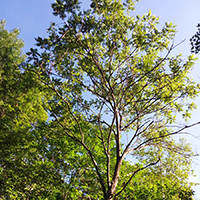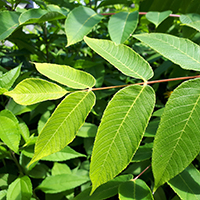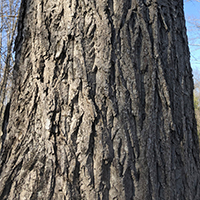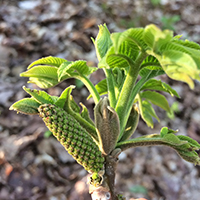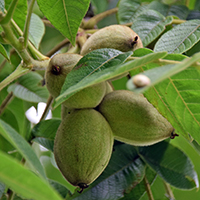What butternut looks like
Size and shape
- Reaches 25 metres high.
- Fast-growing, short-lived tree (less than 80 years).
Leaves
- Compound leaves with 11 to 17 leaflets.
- Hairy stalks.
- Leaves drop after the first few fall frosts.
Bark
- Pale gray ridged bark.
Flowers
- Small yellow-green catkins produced in spring.
Fruit
- Sticky, elongated fruits containing sharply ridged, edible nuts.
Where butternut is found
Butternut trees can be found scattered across most mixed deciduous forests in Southern Ontario, except for Bruce Peninsula and Manitoulin Island. Already an uncommon tree in Ontario, butternut is now considered endangered due to invasive butternut canker.
Find out what we are doing to protect butternut by reading the recovery strategy.
What you need to know to grow butternut
- Moisture: can tolerate moist to moderately dry soil.
- Soil: grows best in well-drained, rich soils in valleys or on slopes.
- Shade: grows best in full sun.
- Cautions:
- butternut canker: butternut trees are threatened by butternut canker, an invasive fungus that causes multiple elongated cankers that eventually kill the tree. Naturally occurring trees are protected by the Endangered Species Act, 2007
Benefits and uses of butternut
Wildlife benefits
Butternut fruits are a food source for small mammals such as squirrels.
Commercial uses
Wood from butternut trees can be used for:
- cabinetry
- furniture
- veneer
Butternut trees may be grown for their edible nuts.
Fun facts about butternut
- Butternut and walnut husks contain tannin that has been used for dyeing fabric and making ink. It will also stain your hands for weeks!
- Butternut is threatened by hybridization with non-native walnut species planted for their edible nuts. Hybrids can be difficult to identify.
- Butternut trees are often mistaken for black walnut.
Updated: November 22, 2023
Published: July 17, 2014
